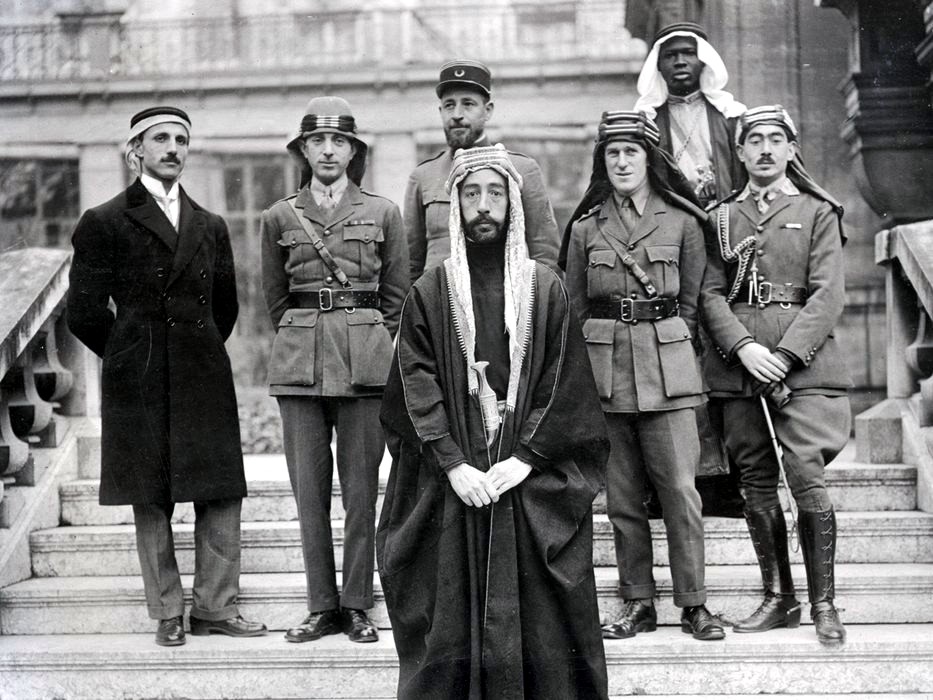
During the First World War, British and French agents, most notably T.E. “Lawrence of Arabia,” recruited and trained Arab insurgents to conduct guerrilla warfare against Germany’s ally, the Ottoman Empire. Until then, Arabia and the provinces centered around Damascus, Aleppo and Baghdad were all part of the Ottoman realm. Their Turkish ruler, the Sultan, was also the Caliph of Islam. Most Arabs didn’t see this as a problem.
So Lawrence’s first task was to convince a key Arab leader that Arab independence was both a good idea and possible. His most important convert was Hussein ibn Ali al-Hashimi, the Sharif of Mecca. The Hashemites commanded respect as ancestral caretakers of the holy cities and as blood relatives of the Prophet Muhammad.
Arab kings are from Istanbul.
But of course, it was the Turkish Sultan who was the heir to Muhammad’s seat of authority. Sharif Hussein was born in Istanbul and only received his post in Mecca from the Sultan in 1908. Hussein’s sons, the men who would be kings, got their educations in Istanbul too. In fact, their primary language of education was French, as this was the standard at Galatasaray, the renowned imperial high school. Sharif Hussein, who reputedly spoke Turkish better than Arabic, remained a loyal Ottoman subject.
It was the First World War that changed all that. Ultimately, with the defeat of the Ottomans and their German allies, Hussein declared an Arab kingdom based in Mecca and took the title of Caliph. It didn’t last. For while the British Foreign Office backed the Meccan Hashemites, the British Colonial Office favored the Ibn Saud faction in eastern Arabia. By the end of 1925, the Saudis seized control of Mecca and Medina, ending the Hashemite kingdom there for good.
Elsewhere in Arabia the anti-Ottoman movement at first found little support among Arabs. The ideal of nationalism was still new in the region. Most of the Arab world remained loyal to Pan Islamist ideals. For them, the brotherhood of all Muslims under the ummah, or community, was the most important thing. As was loyalty to the Caliph. Even today, this tension between Islamic and nationalist identity remains at the core of unrest in the Middle East.
Is there a cartographer in the house?
In any case, the Ottoman caliphate disappeared at the end of the war, replaced by a secular Turkish regime. In keeping with the times, Britain and France favored establishing Arab kingdoms that they hoped would remain within their spheres of influence. With Mecca out of the picture, Sharif Hussein’s sons Abdullah and Faisal were made kings of Jordan and Iraq (and briefly Syria). These countries appear on our maps today only for this reason. And only the Hashemite Kingdom of Jordan remains intact.
What happened to the others: Syria’s Hashemite kingdom stood only briefly in 1920. King Faisal, son of Sharif Hussein, was reassigned by the British to become King of Iraq. His Syrian kingdom was replaced by a series of French controlled states, taking the form of modern day Syria in 1930. Syria declared independence in 1946. The kingdom in Iraq ended in 1958 with a military coup.